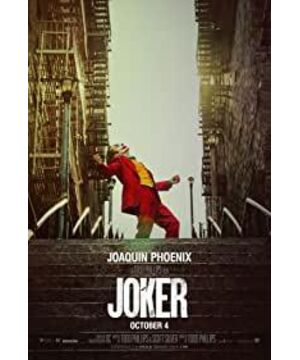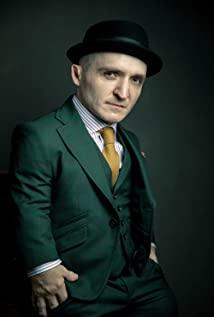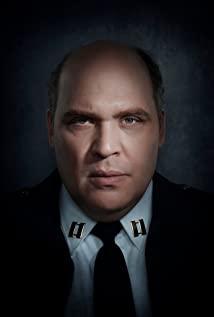"Joker" may be put together with the biopics of the mean, and put it into a certain kind of Hollywood hall, maybe it will get a few Oscars especially because of the mean.
Although director Todd Phillips specifically emphasized that this work is independent of DC's expansion of the universe, in fact, the overwhelming publicity of the film party has been constantly suggesting that this movie wants to tell you how the male protagonist became the clown in everyone's mind. The so-called "independence from the DC universe" is like a disclaimer, which is intended to separate the movie from the hero/anti-hero movie category and create it in the form of biographies of real characters. It does produce a function similar to Tian Ji's horse racing. Once there is no comparison, it is difficult to find a recognized standard. This is its cunning place.
After the success of "The Queen", the biographical film led by the star became a clearer specification and reached a tacit understanding of craftsmanship. We can regard it as a correction of tense, which abandons the past two-point black and white, or the gray area of mixed good and bad, and tries to give a complicated character. At the same time, the whole life's drawing-style description method or the dramatic advancement of the event's initiation, succession and transformation has also been almost abandoned. Biopics began to use the state of the character within a certain period of time as the theme, the character's transition in two states or one of several states. The exploration of time has become a clue that drives the film from beginning to end.
But this did not change the essence of commercial biopics. It is still a character standard constructed by Hollywood. The operation method of the star industry, the way of expression of promotional materials, the calculation of the market and the audience by the film maker and producer system, and the feedback of popular culture all participate in this construction. Under the influence of these factors, the audience has formed in their minds. A standard for biopics and these characters.
Under this system, the boldness or conservativeness of the movie does not actually depend on whether the script or the characters can be contaminated by the issues/elements, but whether it can break through the audience’s preset value judgments, not “whether” but “how”. ".
The creation and production methods of "Joker" continue the very standard biopic models currently in Hollywood: well-known acting actors, anti-hero/unconventional hero protagonists (the sick villain is actually an extreme variant of the unconventional hero) , Has long been tried and tested in the comic world), infinitely enlarged details and small movements. It's just that in live-action biographical movies, either strictly follow the facts or strictly follow the wishes of the families of the prototype characters. "Joker" has almost absolute freedom. To show how the clown became the later notorious villain, the director can do almost anything. I mean, what kind of environment the characters will be put in, what will happen to them, and the causal connection of these encounters that affect their personality, all are determined by the editor.
The film said that this is the most unreasonable traitor in the history of DC comics (and possibly in the history of American comics), the opponent that Batman has never really guessed, the spokesperson of evil for no reason: in a set of Hollywood commercial movies, his Evil can be "explained"-he suffered from repeated domestic violence in his childhood and was physically and mentally damaged. After being oppressed several times in a malicious city, his favorite betrayed him, so he merged with evil. At the same time, the behaviors of passersby who appeared in this movie with the clown and set off a large-scale street movement were symbolized and flattened. They have no names, no faces, no antecedents, no consequences, and even no lives. Although many actions of the Joker are revenge for those who have hurt him, it is difficult to confirm in the contrast between the foreground and the background that the director of "Joker" cares about the action and meaning of "resistance". The host of the show played by Robert De Niro seems to have broken the attitude of the creators: Don't blame yourself here.
The clown was initially given the image of a weak person, and then frequently encountered the evils of the system and the community. The film seems to care for individuals in a harsh social environment, but there are some too coincidentally. At the critical moment of change, the director consciously retreats to the safety line. The important turning point of the clown is almost entirely due to his spirit and psychology. Illness, the story happens to be at this time, far away from the opportunity to touch the problems of the system and the community. In a High Concept or abstract, extremely comical story, the author can push the transformation of the characters to "destiny", but once the entire drama scene is concretized, he wants to pursue the character from the point of extreme realism, but the author still The language is unclearly biased towards the tone of "self-inflicted" and "good luck". This way of writing is undoubtedly tricky and self-deceiving.
After the film was released, those who questioned the support of the right wing by the director was actually exaggerated. Flattening passers-by and protesters and putting deep-seated problems on the shelf, "Joker" only roughly classifies social movements as right-wing populist behaviors, and condescends the protagonist with "poor people, hateful things".
The lens processing similar to Martin Scorsese in the movie brings more problems than the unoriginal scene. This kind of brutal use doctrine just reflects the choreography and inexplicability of the choreography of the clown characters. The damage is just like the rigid interpretation of literature in most so-called creative writing. That kind of character description-designing small actions for the protagonist, zooming in on their facial details, slow motion and staring one-man scenes-is not only used by Scorsese? Borrowing Scorsese's visual aesthetics, whether you want to enhance the film's aesthetics or add personality to the formulaic character processing, the effect is not satisfactory.
When we see comedians repeat Stephen Chow's funny tricks, we often feel uncomfortable. The reason is not just a matter of order. When portable photography is repeatedly used, the audience may not be greatly offended. It is usually just a technical technique, and it rarely breaks away from pure technology with its own narrative and becomes independent. language. But the method of character description on the big screen is more than just technology. It is not only the choice of the position and angle of the camera. In the movie "Joker", its non-original part is the process of building the characters and the colorful part added to the shaping. It does not use very basic techniques, but attempts to create a character that is very clear in the minds of the public through many past label-like expressions. While highlighting the so-called individuality, it also has the name of tribute and at the same time declares that it is Break away from the comics and movie universe, stand alone into a story, close to the real story. This obviously makes people unable to believe that the director really has thoughtful thinking about this role. Because his construction process and methods are not the product of independent thinking and originality, but rather typified and hollow. The movie spends a lot of space to interpret the "morbidity", using the lens to focus on the details of the performance, and it does divert the viewer's attention. Isn't that a kind of blindfold?
The audience knows that this role must belong later, and the reason why everyone is willing to sit down is nothing more than expecting the director to justify himself and tell the story clearly. "Joker" does not use a head-up angle, except for its condescending, unoriginal, deliberately prominent gaze, which pushes the protagonist into an awkward position while maintaining a clear distance. The technique intensified the pity of the “non-my race”, and the turning point of the plot emphasized that the protagonist and the people who subsequently took to the streets and worshipped the clown were incurable. This “ingenious” angle squeezed out the particularly tricky alleys. The camera shows the humanistic "correctness" of the clown, while the other side brutally labelled social movements as right-wing populists, quickly drawing the line.
When the clown retaliates, the "king" aura imposed by the lens is obviously to respond to the audience's psychology, release the oppression they have seen before, and then produce an empathy effect. Between the crowds on the street, the fire and the destruction, it enhances the cathartic pleasure. Contempt for the structured motives of these behaviors, completely ignore the pretext and the aftermath of these phenomena, just like the role of the clown mother, create a leaning but vague Rashomon, because the director does not care about the structure, community, and individual context. . They just want to create a dramatic conflict, distortion of the technique and the superb acting ability of the actors, "Joker" did. On the contrary, Thomas Wayne’s character seemed unreasonably stupid at first, but later used the other's delusion to quickly maintain his aura. This approach in turn strengthened the clown’s self-comfort. The latter half of the movie has been swaying smartly from side to side. To the end.
Like many film and television dramas, "Joker" constantly provides hollow and flat symbols. Especially in this era, perhaps it will gain vigorous vitality. After the social platform has become an important communication channel, the evaluation and analysis of cultural products has a new look and direction. Extracting symbols and making another essay has become a very important way of writing comments. It should break away from the source of extraction and open up another space. Unfortunately, we often see these comments and works erroneously linked. It may also give wrong signals to creators, making "putting in symbols" sought after as an important creative method.
Aside from abstract creation, the so-called works on the ground often develop an unspeakable habit. For example, TV dramas put roles of different incomes into a high-level community. If they lack factual construction and the writing of the structure, it does not necessarily have to sincerely discuss class issues; TV dramas include women who have been violated, if they lack gender issues and violence It’s not a sincere discussion of women’s rights. But it doesn’t matter. The downstream of cultural products-media and social platforms-will extract these symbols on their own. Regardless of whether the problem at the source is true or not, they can develop these symbols on their own, because the symbols themselves have their original history. The context has its practical significance. As long as you don't delve into the action of "putting in symbols", it seems that finding the symbols is the success of the work-for the time being, regardless of the over-interpreted parts.
The rough bottom and street group portraits of "Joker" undoubtedly give the work the vitality to be discussed in such a critical environment. It also amplifies the absurdity that already exists in the commentary world at once. The danger of this absurdity is that the cross-sectional depiction of the community is a very basic creation method for fictional works. No matter from the perspective of fiction or reality, there are always signs in various senses. Before the Internet age, the creator’s learning and exploration process was also a process of enriching his personal symbol library. After entering the Internet age, the accumulation and use of symbols has shown a cliff-like difference from the past. The comment method of crudely extracting symbols and analyzing has become self-written and wishful thinking. "Joker" was born in this era and is sought after. In the final analysis, I am afraid it is because it is loaded with symbols in the progressive tense. The break between realism (or so-called realism) and reality, the break between the symbol and the content, the break between the critic and the work, may be the joke, or we have not had time to pay attention to its comical features.
View more about Joker reviews











